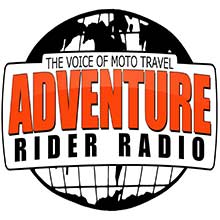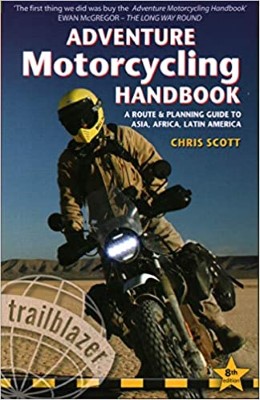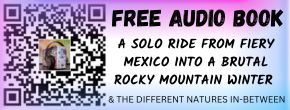 |

20 Jul 2006
|
|
Registered Users
HUBB regular
|
|
Join Date: Aug 2005
Location: Southern Africa
Posts: 47
|
|
|
Border crossings: Libya into Egypt
Hi All
As I couldn't find much detailed info on this crossing before we did it, I will try and give some details of the Libyan/Egyptian border crossing. We entered Libya from Tunisia and the details on the Sahara Overland site were adequate in getting us through that. Thank you, Chris.
EXITING LIBYA AT MUSAAD (aka AHSAAD)
About 100km from Tobruk, the road forks with English signposts for the first time! Take the right hand fork, signed Musaad (Ahsaad on the maps). Drive through Musaad (about 130km from Tobruk). Just before you get out of town, look out for a building on the right-hand side of the road with flags flying and several cars parked outside. You MUST stop here to return your Libyan plates and get back 100 Libyan Dinar. When you do this, give them the group of 3 papers that were issued with the plates on entry. They take the top 2 copies and you keep the bottom, larger copy. Nothing is stamped, but it was all accepted by customs at the border. Note that if you miss this, you may end up having to return after already being stamped out of Libya, which is what happened to us and another vehicle we saw.
Outside of the town of Musaad, you have to drive along 2 stretches of ragged road (detour off the main road, which seems to be in the process of being repaired) before you reach a checkpoint. Stop before this checkpoint and get your carnet stamped to export the car.
Go through the checkpoint and the immigration kiosks will be obvious ahead of you (choose any, but it's worth getting out and asking at one of the kiosks in order to avoid getting stuck behind a taxi of numerous people!). Get your passports stamped here and then go through the checkpoint where you'll need to produce evidence of your plates being returned (aforementioned slip of paper) and your passport. There is a second checkpoint after the 'Duty Free Shop on the right. Passports again.
Then you're through, into a short stretch of No-Man's Land before the Egyptian checkpoint (Sallum).
ENTERING EGYPT AT SALLUM
Go through the checkpoint and head for the hangars ahead. Park up and go into the first hangar on the left. Complete and Arrivals Form and get your passport stamped at the east end of the hangar. There are plenty of Port Police to help here. Immigration is then complete.
Now the car. What a performance. This part of the procedure took us 2/3 of the entire time it took us to get through Libyan and Egyptian borders and was, as Chris says, an arseache of note. We were assisted by a couple of really nice gents, who asked for nothing in return, which was completely unexpected. However, it's easier to be helped by these people (who rush you from place to place) if you have an idea of what the procedure is. Here goes:
Drive your car up one of the driveways on the right, looking for someone who'll wave you up. You'll be parked here for a while. The procedure is:
1. Get your chassis number validated against your carnet.
2. Change money either at the bank (only dollars/euros/pounds) or the money changers outside (Libyan Dinar). You need a total of 607 Gippo pounds (EP) to get you and your car into the country, so make sure you've got that before you go any further.
3. In the hangar, go through the corridor at the west end (opposite end to the immigration kiosks) and follow the passage right to the back to the man who deals with carnets (referred to Triptique). If you flash it around, most will understand where you need to go and can direct you. Carnet Man will complete and stamp the carnet and then ask you for 502 EP.
4. Go to the cashier to pay over your 502 EP (Carnet Man should direct you), get a receipt and take it back to Carnet Man, who will look at it, shuffle papers, give you the import section of your carnet (keeping the rest for the time being) and then instruct you on the next step.
5. Go back to the car to get a rubbing taken of the chassis number. Ours was done by a white uniformed man, but I've no idea what authority he represented. Make sure the rubbing is clear, because if it's not, it'll be rejected and it'll have to be done again. The rubbing appeared to be taken on a form expressly for this purpose and the number on the chassis itself was taken, not the plate on the top of the Land Rover engine.
6. Take the rubbing, the importation portion of your carnet (as issued in step 4), the carte gris (registration papers for the car) and your passport over to the building housing the Traffic police, which is further up the road on the right. (You should be allowed to drive here if the rubbing is acceptable.) Enter the building and look for the office on the left at the end, where there is a copying machine and an operator who will charge 25 EP to copy the visa page in your passport and the importation portion of the carnet. (I had copies of everything else.) He'll put all into 2 folders (not sure what order, but he knows and you can leave it at that).
7. Buy insurance (25 EP for one month) from the office next door to the Traffic Police.
8. Go back to the Traffic Police office with your insurance and all other papers collected along the way (including the relevant copies). Pay the Traffic Police 50 EP. You'll be issued with temporary license plates, which will be attached by a man outside for a further 5 EP. (You could do this yourself, but if it's late and you've been there ages, 5 EP is a small price to pay!)
9. Take the paperwork issued by the Traffic Police and copies of stuff made in step 6 back to Carnet Man. He will check everything, put it all in a folder (why???) and give you back your carnet.
10. Go back to the Traffic Police to collect your Egyptian license (credit card sized thing that you'll be asked for at all checkpoints in Egypt, as well as various tourist sites).
There is one last checkpoint before you're in Egypt proper. Have your passport and Gippo license ready. And you're through. Enjoy the pass down into Sallum town, which is pretty spectacular after a relatively flat coast road in Libya.
HANDY HINTS
Get the details page of your passport translated into Arabic (including the dates and numbers). This speeds up the process considerably as you won't need to spend ages pronouncing all your names, etc, slowly with increasing irritation! In Libya, very few people speak English and the border is no better. In spite of expectation, the Egyptian side of the border was equally
Arabic and our translated passports did help. Have several copies so you can hand them out.
COSTS
I tried to keep tabs on costs, but after 3 hours of shelling out money to various authorities, I lost track. We popped out the other end 607 EP poorer, which amounts to 84 Euros at the border exchange rate of 7.23/1EP.
Good luck
Bel
|

20 Jul 2006
|
 |
Super Moderator
Veteran HUBBer
|
|
Join Date: Jun 2000
Posts: 4,988
|
|
|
Great report Bel, thanks a lot.
Ch
|

7 Aug 2006
|
|
Contributing Member
Veteran HUBBer
|
|
Join Date: May 2002
Posts: 182
|
|
 Just to confirm...
Just to confirm...
Enquiring about Tunisia to Egypt route…please tell me if this is correct
Libya…
-need a invitation (do I get this in UK or Tunisia?)
-DON’T need a guide just to travel across the top to Egypt
-Can get a Visa in Tunisia at the border (or is it better to get it in UK first?)
Egypt
-Apart from lots of arsing about at the border, I need a carnet worth 5 (or 8?) times the value of the vehicle?
I actually saw this article below which says you can buy Egyptian carnets at the border now…don’t know which borders though and deposit is big!!…
http://en.wikipedia.org/wiki/Carnet_de_Passage#Africa_2
“in 2006 also , Egypt has now Its own carnet , available for those without a valid Carnet-De-Passage at the borders . It still requires a cash deposit (up to 2000 Euros) which is returned upon exit.”
|

11 Oct 2006
|
|
Registered Users
HUBB regular
|
|
Join Date: Jun 2004
Location: wells,u.k.
Posts: 23
|
|
|
Just read your brilliant report on getting into Egypt - we're going to be doing it in a couple of months time and it will really help. Couple of questions:-
1. It sounds as if you might not have had a guide in Libya. Did you manage without one? Did you get your Libyan visa at the border?
2. I've just seen a report that says you need permission from the Traffic Department to take a right hand drive car into Egypt and you need permission from the Customs to take in a 4WD (and you have to apply 35 days in advance). Did you have to do either of these?
3. How was the ferry from Aswan to Wadi Halfa?
|

5 Feb 2007
|
|
Registered Users
HUBB regular
|
|
Join Date: Aug 2006
Location: Italy
Posts: 30
|
|
|
Hello nice post Bel,
I've been in Egypt in december/jan entering at Sallum.
Now just minor changes (costs remain the same)
After you've cleared immigration they will ask your baggage go through an xray machine (just take one bag).
Then you have to clear custom and they check bike/car and if you have both passport and carnet.
After this they send you directly in front of the Traffic Police office kiosk.
Before remember to change money otherwise you can't buy the xerox copies.
Here (outside Traffic Police office) two men will check your engine with the rubbing, collect the paper they give you, after this:
1) buy photocopies and two folders 25 EP (I saw egyptians paying 15 EP)
2) go back to the hangar, change money if you didn't change before
3) go to carnet man with copies and rubbing, he will give you a receipt
4) go out pay receipt to cashier 502 EP
5) go back to carnet man, give him the payed receipt and he give you all the papers except the carnet
6) go to police give paper and pay 50 EP and they give you yellow egyptian plates
7) go back to carnet man with your papers and plates and he'll give you back your carnet
8) go to police office building (left side) to buy insurance 25EP
9) go inside police office give them all your papers and they'll give you the egyptian licence
10) ready to enter Egypt
L.
|

18 May 2007
|
|
Registered Users
Veteran HUBBer
|
|
Join Date: May 2007
Location: London
Posts: 621
|
|
|
My own experience at the Egyptian border on 4 May
We took just 2 1/4 hours to clear Egyptian customs with the vehicle and we only had to go to 10 windows. They could certainly use a bit of Business Process Re-Engineering, but I was a bit disappointed after seeing this - Egypt is notorious:- http://overland-underwater.com/photo/video/fav_vid.htm
|

27 May 2007
|
|
Registered Users
HUBB regular
|
|
Join Date: Jun 2005
Location: London
Posts: 57
|
|
We used 30 Libyan Dinars that we had left to pay for one of the "guides" to help us. It took us 1h55 minutes and we paid exactly the same as Landygirl above. I had no stress at all, just followed the guy and handed over the money and the relevant papers.
After what I've seen I would've paid him a hundred dinars!
ABOUT US « Orphea’s African tales
|

14 Jul 2008
|
|
Registered Users
New on the HUBB
|
|
Join Date: Jul 2008
Posts: 1
|
|
|
driving my car into Egypt
hi,
how long is this carnet valid for? i am living in the us and will be on an assignment in Egypt and wanted to bring my car trip ticket to Egypt but there are no info to read about that on the net. I wanted to know how long can i keep the car in Egypt..I heard I can bring it with a trip ticket and drive to libya and renew this carnet everyonce in a while...help!!
Sherif
|

14 Jul 2008
|
|
Registered Users
HUBB regular
|
|
Join Date: Jan 2005
Location: Ireland
Posts: 65
|
|
|
Great info!
Thanks Landygirl,
In 2005 we crossed into Egypt from Jordan at Nuweiba and spent 10 hours (yes 10 hours) to clear customs because we were sure they were trying to overcharge us with all the ridiculous formalities. This was mostly caused from a nasty experience crossing from Romania into Bulgaria a month earlier where most people were having to pay a €5 bribe and from this we made a decision to try the patience of any official requesting payment from us. Your information would have helped a lot.
Interestingly at the time they also requested to see the engine number but because it couldn't be found they wanted to stamp a new number on it instead. Hilarious episode - suffice to say they never got their stamping done.
|
|
Currently Active Users Viewing This Thread: 1 (0 Registered Users and/or Members and 1 guests)
|
|
|
 Posting Rules
Posting Rules
|
You may not post new threads
You may not post replies
You may not post attachments
You may not edit your posts
HTML code is Off
|
|
|
|

Check the RAW segments; Grant, your HU host is on every month!
Episodes below to listen to while you, err, pretend to do something or other...

2020 Edition of Chris Scott's Adventure Motorcycling Handbook.
"Ultimate global guide for red-blooded bikers planning overseas exploration. Covers choice & preparation of best bike, shipping overseas, baggage design, riding techniques, travel health, visas, documentation, safety and useful addresses." Recommended. (Grant)

Led by special operations veterans, Stanford Medicine affiliated physicians, paramedics and other travel experts, Ripcord is perfect for adventure seekers, climbers, skiers, sports enthusiasts, hunters, international travelers, humanitarian efforts, expeditions and more.
Ripcord Rescue Travel Insurance™ combines into a single integrated program the best evacuation and rescue with the premier travel insurance coverages designed for adventurers and travel is covered on motorcycles of all sizes.
(ONLY US RESIDENTS and currently has a limit of 60 days.)
Ripcord Evacuation Insurance is available for ALL nationalities.
What others say about HU...
"This site is the BIBLE for international bike travelers." Greg, Australia
"Thank you! The web site, The travels, The insight, The inspiration, Everything, just thanks." Colin, UK
"My friend and I are planning a trip from Singapore to England... We found (the HU) site invaluable as an aid to planning and have based a lot of our purchases (bikes, riding gear, etc.) on what we have learned from this site." Phil, Australia
"I for one always had an adventurous spirit, but you and Susan lit the fire for my trip and I'll be forever grateful for what you two do to inspire others to just do it." Brent, USA
"Your website is a mecca of valuable information and the (video) series is informative, entertaining, and inspiring!" Jennifer, Canada
"Your worldwide organisation and events are the Go To places to for all serious touring and aspiring touring bikers." Trevor, South Africa
"This is the answer to all my questions." Haydn, Australia
"Keep going the excellent work you are doing for Horizons Unlimited - I love it!" Thomas, Germany
Lots more comments here!

Every book a diary
Every chapter a day
Every day a journey
Refreshingly honest and compelling tales: the hights and lows of a life on the road. Solo, unsupported, budget journeys of discovery.
Authentic, engaging and evocative travel memoirs, overland, around the world and through life.
All 8 books available from the author or as eBooks and audio books
Back Road Map Books and Backroad GPS Maps for all of Canada - a must have!
New to Horizons Unlimited?
New to motorcycle travelling? New to the HU site? Confused? Too many options? It's really very simple - just 4 easy steps!
Horizons Unlimited was founded in 1997 by Grant and Susan Johnson following their journey around the world on a BMW R80G/S.
 Read more about Grant & Susan's story
Read more about Grant & Susan's story
Membership - help keep us going!
Horizons Unlimited is not a big multi-national company, just two people who love motorcycle travel and have grown what started as a hobby in 1997 into a full time job (usually 8-10 hours per day and 7 days a week) and a labour of love. To keep it going and a roof over our heads, we run events all over the world with the help of volunteers; we sell inspirational and informative DVDs; we have a few selected advertisers; and we make a small amount from memberships.
You don't have to be a Member to come to an HU meeting, access the website, or ask questions on the HUBB. What you get for your membership contribution is our sincere gratitude, good karma and knowing that you're helping to keep the motorcycle travel dream alive. Contributing Members and Gold Members do get additional features on the HUBB. Here's a list of all the Member benefits on the HUBB.
|
|
|